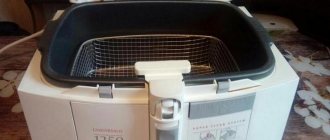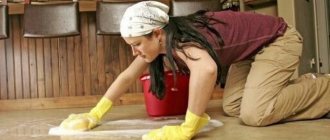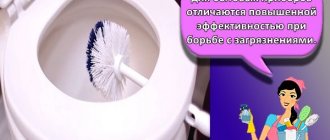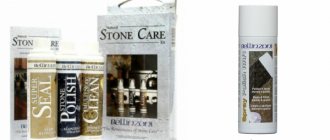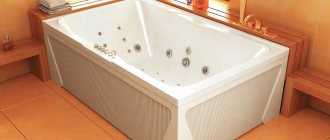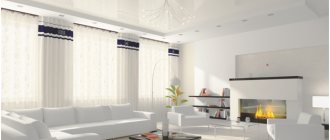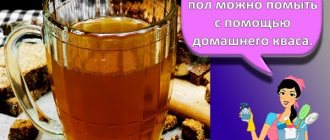How to wash wooden floors without spending a lot of time on it?
Plank floors made of natural wood are the most ancient and reliable type of flooring, which, unfortunately, today is widely replaced by synthetic materials. After all, caring for linoleum is much easier than cleaning wooden floors, especially if they are unpainted. But wood flooring allows air to pass through well, retains heat, has a beautiful appearance, and has a calming effect on the nervous system. The main thing is to know the ways and means that will help keep your wooden floor clean.
How to clean a painted floor
In a residential area, it is customary to paint a wooden floor with paint or enamel specially designed for this purpose. This coating reliably protects the wood from the formation of greasy and dirty stains. Dust does not penetrate through the protective film, but remains on the surface, which greatly simplifies the work of cleaning the floor.
Before you start wet cleaning, you need to clear the floors, as much as possible, of objects standing on them. Then you should thoroughly vacuum or sweep the boardwalk with a broom. Otherwise, all the dust will move into the joints between the floorboards, and it will be very difficult to wash it.
To clean painted floors, use a soft flannel cloth and a mop. If ordinary daily cleaning is planned, you can do without detergents. You just need to pour clean warm water into a bucket, wet and wring out the cloth thoroughly and walk along the floorboards.
It's another matter if it's time to do some spring cleaning. In this case, the following products will help clean wooden floors:
- acetic acid (9%) - a five-liter bucket of water will require 50 g of vinegar;
- ammonia - 1 tbsp. l. for 5 liters of water;
- baking soda - 4 tbsp. l. for 2 liters of water.
When cleaning painted wood, you should not choose products containing chlorine. The dirty spots will disappear, but the wood will permanently take on a whitish tint.
At the end of general cleaning, you can wipe the floors with a special solution that gives painted wood a special shine. To prepare the product, add 2 tbsp to 2 liters of water. l. table vinegar and 1 tbsp. l. furniture polishes.
Conclusion
Now, having learned the recommendations and tips, you can easily wash the floor with a brilliant result, and admire the well-groomed wooden floor for a long time. And now I suggest you familiarize yourself with the video in this article - it gives a clear example of how to wash such flooring. We can discuss your questions and ideas in the comments - write!
You can clean wooden furniture and remove drips, traces of paint and varnish, and various build-ups on wooden furniture by following these simple cleaning tips. You often polish and dust your wood furniture, but over time, the polish and dust combine together to leave a dark film on your countertops, chairs, and bookshelves. In order to give and maintain the best appearance of your furniture, deep cleaning should be done periodically. Here's how to deep clean wood furniture without damaging its polished finish.
How to wash floors for the first time after painting
A freshly painted wood floor is shiny and sparkling clean. But a few days pass and dust, various prints and other contaminants appear on the new coating.
To remove stains and stubborn dirt from recently painted floors, you need to remember a few rules:
- The first time the floor is washed two weeks after painting. During this time, the paint will dry thoroughly and be absorbed into the wood.
- Do not use detergents, just warm water and a soft cloth. You just need to change the water more often (a bucket of 2–3 m2).
- If the floorboards are painted with pentaphthalic-based alkyd enamel, you can wipe the floors with a solution containing vinegar essence. To do this, pour 1 tbsp into a 10 liter container of water. l. 70% vinegar, wash the floor, and then be sure to wipe it with a clean damp cloth. Be careful: vinegar essence should not get on the skin or mucous membranes!
- If nitro enamels or polyurethane enamels were used to paint the floor, it is better not to use an acid solution, but simply wipe with a damp cloth.
For all paint and varnish coatings, you can use a weak solution of ammonia (add 1 tablespoon of ammonia to 10 liters of water).
Restoring the shine of linoleum
To add shine to tarnished linoleum, you can use the following recipes:
- After dry and wet cleaning of linoleum, polish it with a silk cloth and linseed oil. This product will not only restore the original shine to the coating, but will also help disguise the scratches that appear on it.
- Potato broth. To restore the shine of the floor surface, use the liquid after boiling potatoes.
- Milk. Mix a glass of milk with a little water. Wash the floor with this product and polish with a soft cloth.
How to properly clean an unpainted floor
Unpainted wooden floors are most often found in bathhouses, cottages, verandas and summer kitchens. Such a coating requires careful cleaning, otherwise the wood will darken, become covered with numerous stains of grease, and the room will look sloppy.
When starting to clean unpainted flooring, you need to prepare:
- a brush with short, stiff bristles;
- a piece of cotton cloth;
- bucket with water;
- laundry soap or soda.
To obtain a cleaning product, baking soda in the amount of 3 tbsp. l. dissolve in 1 liter of water. If you decide to use laundry soap, then grind one bar on a coarse grater and dilute it in 5 liters of warm water.
Moisten the floorboards one by one with the prepared mixture, while rubbing them with a brush. Do not leave puddles on wooden floors for long periods of time. To prevent moisture from being absorbed into the surface of unpainted wood and the boards from swelling, each area to be treated must be wiped with a slightly damp cloth.
Bleach
Bleach will help remove stubborn dirt from linoleum. You can use a special product designed for cleaning linoleum or take regular Whiteness. But chlorine can harm the material, so the solution must be very weak.
- mix Whiteness with water in a ratio of 1:10;
- moisten a soft cloth with the prepared solution;
- treat contaminated areas;
- Wash the floor with clean water and wipe the coating dry.
Bleach can remove rust, mold, grass, paint and felt-tip pen stains from linoleum.
It is strictly not recommended to use bleaches in their original concentration, because their main property is discoloration; reviews of their use are not the best.
To try to dissolve fat, you need to use very weak solutions and increase their concentration as needed. A trial application on hidden areas of the floor or pieces of coating is relevant.
Removing Stains from Wood Floors
On wood floors, like on any other flooring, complex stains can appear in the form of paths in the hallway from dirt brought in with shoes from the street, oil stains, stuck chewing gum or traces of cat urine. Each type of contamination has its own cleaning method.
Dirty stains near the entrance
The part of the corridor near the front door is the most trafficked place in a house or apartment, so the floors in this place get dirty the fastest. To wash street dirt from a wooden surface, you need to arm yourself with a rag, a brush and any detergent. Dishwashing gel, washing powder, and laundry soap are suitable. Having prepared a soap solution, apply it to the surface of the floorboards, rub with a brush and rinse with clean water. If it is impossible to deal with stains using ordinary detergents, use Pronto wood surface cleaner.
Grease stains
Such stains can most often be found in the kitchen or dining room. Food falling on the floor, splashes when frying fish in a frying pan, spilled mayonnaise - all this can lead to a room looking sloppy. You can deal with contaminants using gasoline or solvent. You need to moisten a paper napkin in one of these products and rub the stain thoroughly, then wash the floor in this place with a soap solution.
Adhesives
If chewing gum is stuck to the wooden floor, children have smeared plasticine or stuck tape, do not despair. You can deal with such contaminants by freezing. Place a bag of ice on the sticky substance and wait until the stain is thoroughly frozen. After this, the hardened substance can be easily scraped off with any metal object.
Dye
Drops of old dried paint can be removed with alcohol. A cotton pad soaked in alcohol is placed on the blot and left for several minutes until the stain becomes soft and pliable. Then they scrape it off with a knife, and wipe off the remaining traces with a soap solution.
Eraser
Often black streaks left by shoes appear on the flooring.
A regular eraser will help remove them. They need to rub the contaminated area. When the streaks disappear, you should wash the linoleum with soapy water.
This method will be effective if the shoe marks are not too old. Therefore, cleaning must be done regularly.
A stationery eraser works great on old dried greasy stains that have hardened.
It is necessary to make some effort so that the frictional force acts on the plaque and it can be removed. The streaks that remain after the eraser can be washed with warm soapy water.
What is
The first floors made from beautifully selected wooden planks appeared in Europe in the 13th and 14th centuries. This covering was made from several types of wood, using wood of different colors and structures to create patterns and ornaments on the floor. Individual parquet floorings were tightly fitted to each other using special grooves.
Modern parquet has different structures and special types. Separate floor planks are still in demand, but mosaic, panel and parquet boards are especially easy to assemble and decorative.
All types of parquet are distinguished by their natural composition. But installation methods, wear resistance and durability vary depending on the type, number of joints and layers.
Piece
Block parquet consists of individual planks with grooves and tenons for connection. They allow you to assemble a single piece of fabric into a common floor structure. The size of the parts is 50x7.5 centimeters, thickness is 1.5-2.2 centimeters.
This parquet is durable, fits into different patterns, and is easy to repair.
Mosaic
The mosaic, or typesetting, type consists of shields (side size - 40 or 60 centimeters), with the help of which exquisite patterns are assembled. The shields differ in the type of edges and the options for attaching them to each other. Under this type of parquet you can make an insulating layer on the floor.
Shield
Two-layer parquet, consisting of a lining made of fiberboard or boards and an upper decorative part made of small strips of hardwood. The shield has a significant size - sometimes up to 80x80 centimeters.
Parquet board
The main difference is that the board contains 3 layers of wood, the middle part is positioned so that the fibers lie perpendicular to the upper and lower layers. This gives the parquet board strength and durability. This material is convenient to lay on the floor and disassemble.
Main causes of pollution
A number of reasons have a negative impact on the condition of parquet. Ordinary dirt is absorbed into the wood, penetrates into the cracks, disrupts the structure and spoils the appearance.
Moisture
Wood absorbs moisture from the air and liquids spilled on the floor. Because of this, spots appear and color changes. Water attracts other contaminants - dust, debris.
Pets
Ubiquitous animals scratch the parquet with their claws, drag fatty food and favorite toys across the floor. The most ill-mannered ones may urinate on the floor. The damage caused to parquet by pets is usually the most significant.
Furniture items
Heavy furniture presses down on wooden parquet, and dirt accumulates in the dents, which is difficult to remove. There are also traces on the floor from moving furniture, chairs on wheels, rocking chairs.
Shoes
Shoes with heels, as well as with soles that leave marks due to poor quality paint, contribute to the contamination of parquet floors. Wet things, bags, and umbrellas thrown on the floor also stain the parquet flooring. Moisture combined with dirt is detrimental to parquet.
How to clean parquet floors
Dry cleaning is recommended for parquet flooring. You can remove dust using a vacuum cleaner with a soft brush that will not scratch the parquet flooring. They wash the floor infrequently, trying not to pour water or create puddles. This should be done only when necessary, when dirt cannot be removed using the dry method.
General cleaning is carried out once a year, in dry weather, when you can fully ventilate the apartment and quickly dry the floor. Use a hygroscopic cloth for washing, which can be wrung out well so as not to leave excess water on the parquet.
Important: handle the water container carefully so that puddles do not accumulate around it on the floor while the mop is wetted.
Mop
The parquet is washed with a mop that does not have sharp hard edges. The nozzle is microfiber, which is highly hygroscopic and quickly absorbs moisture. Models with a mechanical spin are ideal because they immediately remove excess water.
Preparation
The first stage of cleaning parquet is to wipe the floor with a damp cloth to remove dust and identify contaminants that cannot be easily removed.
Removing stains
Even the cleanest owners have stains on their floors. Before you begin removal, you need to understand what they were formed from in order to choose the right removal method.
From tea, coffee, juice
Drink stains can be removed with a cloth soaked in a baking soda solution.
Fresh greasy stains are washed off with detergent, dissolving it well in water. Old stains are removed:
- Gasoline-based solvent. Then wash with soapy water.
- Cool the floor area thoroughly (using ice from the refrigerator), and remove the fat layer with a sharp knife. Then apply a clean cloth and iron it.
- Sprinkle a layer of starch onto the stain, cover with a thick cloth and iron several times.
Wet cleaning of linoleum
You can remove dirt from the floor surface using soapy water. In this case, it is necessary to use warm water and soft cloths. After cleaning the floor, traces of soap should be removed with a dry cloth. Soap should not be allowed to dry on linoleum, as this can lead to destruction of the integrity of the canvas.
As an auxiliary tool, it is allowed to use special mops with foam attachments. During general cleaning, it is recommended to clean the floor surface with a vacuum cleaner or special steam cleaners.
For a month after laying linoleum, you should not carry out wet cleaning. The material may be partially displaced when exposed to moisture. If you need to quickly remove a stain, use antibacterial wet wipes.
Do not overuse the amount of wet cleaning of the floor covering. Try to carry out simple cleaning of linoleum more often using special wipes that absorb dust.
Drying oil will help remove dirt from the floor. Using a piece of woolen cloth and this product, you can polish the surface to a shine.
Mechanical defects on the linoleum surface can be hidden using mastic. For new linoleum, choose colorless mastic; for old linoleum, dark mastic is suitable. If mastic is not at hand, melted candle wax with turpentine in a ratio of 1:3 will replace it.
Proper care of your flooring will protect it from destruction and extend its service life.
Detergents
To wash parquet flooring, use only special ready-made products of two groups - cleansing and protective-decorative.
Cleansing
Preparations with a cleansing effect remove stains and dissolve dirt deposits. It is important to follow the recommended dosage to avoid damage to the wood.
Returns the natural shine to the parquet, does not cause streaks, and preserves the integrity of the wood. Can be used for other coatings - laminate, linoleum. It is better to use gloves when washing.
P&G Professional Mr. Proper
One of the best floor cleaners, suitable for cleaning parquet. Economical - a cap is enough for 5 liters of water. Removes traces of food, old fat, and plasticine from the floor. No special soaking or rubbing is required. There is no need to rinse with clean water. Pleasant smell, the product does not harm your hands.
Cinderella
For washing parquet floors by hand. Consumption – 1.5-2 caps per 5 liters. After use, the parquet takes on a well-groomed appearance and shine. Does not require rinsing. The quality of the water does not matter; the product dissolves at any temperature and hardness.
Emsal
The product is used for washing parquet with any coating - varnish, oil, wax. Emsal protects seams, adds shine, and successfully copes with all types of dirt.
Soap Oil
A product based on coconut soap has a protective effect, removes stains, and cleanses from all types of impurities. Not for use on varnish coatings.
Idronet
Water-based product for protecting parquet. Used for varnished surfaces. The Italian product cleans and restores the appearance of worn parquet flooring.
Parquetpro
Preparation for cleaning varnished wooden coatings in residential premises. Removes greasy, oily and other household contaminants. Add to water when washing, it is also possible to apply the product directly to stains. Non-toxic, without chemical solvents.
Protective and decorative
A group of products that are used only on thoroughly washed parquet. With the help of these preparations, scratches and minor defects are hidden, giving the coating a shine and a fresh, well-groomed appearance. Another task of these products is to create an invisible film on the floor that prevents the destructive effects of dirt and water.
Important: to extend the service life and improve the appearance of the parquet flooring, it is recommended to coat it with special compounds.
Parquet wax
Wax allows the wood to “breathe”, but prevents water from being absorbed into the wood - this is its main merit. Wax coatings extend the life of parquet, seal seams, and add shine and maintenance.
Liquid
Liquid wax is the easiest to apply. It is convenient for them to cover hard-to-reach places; it does not require dilution or preparation of the composition.
Solid
Apply with a melter or require special dilution during processing. It has different shades depending on the thickness of application.
Pasty
The paste does not spread, so this form is the most popular among owners of parquet floors. Apply with a spatula or thick brush.
The varnish coating protects the wood from external influences, preserving the decorative appearance of the wood. Disadvantages: presence of chemical ingredients, chips, cloudiness. Wood coated with varnish loses its environmental friendliness.
Oil
Oil impregnations penetrate into the wood and protect against moisture. They can also be used to change color - whiten or darken. When using mastics, the floor requires additional care and re-impregnation.
Polish
A parquet care product containing wax, water and special polymers. Application – once a month.
What to rub until shiny
Parquet is given shine by hand or machine polishing using special products - polishes, wax, homemade compounds. Polishing is usually performed no more than once a month.
Reference: most owners of parquet floors are more focused not on the polishing schedule, but on the deterioration of the appearance, since the condition of the coating depends on how much people move around the rooms, whether there are animals, and on other factors.
Parquet care
How to wash parquet flooring from dirt while maintaining its exquisite appearance is not an easy task, but the coating is not simple, but very expensive. First, let's talk about protecting parquet flooring from damage.
Prevention
As soon as you have such a floor in your home, be prepared to cherish it like a jewel:
- Often parquet floors are not covered with a protective layer, but only rubbed, so you just need to rub them regularly and don’t forget about it;
- When entering the room, there must be a mat for wiping your feet - parquet does not tolerate dust and sand;
- try to remove stains from the flooring as soon as they appear, using the same methods intended for caring for unpainted floors;
- if your parquet is varnished, do not use dry cleaning agents under any circumstances: wipe off stains only with acetone or solvent - methods for caring for unpainted floors are not suitable here;
- the varnish coating must be periodically rubbed with polish;
- vacuum the flooring every day;
- Monitor the air humidity - your home should not be too dry and too humid, maintain the right balance.
Wet cleaning
Wet cleaning will take more or less time, depending on how long you have ignored the need for cleaning and how neglected your floor is now. Based on this, the means by which you can wash the parquet from dirt will also vary.
Stains
First, it is recommended to deal with stains, if any:
- Stains on unvarnished parquet can be removed using the methods described above to remove dirt from unpainted floors.
- If you have stains on the varnish, then solvent-based products will help you. Or just solvents.
- Chemical agents that can dissolve grease and dirt can carefully remove stains on a laminate flooring.
How to clean dirt from parquet if you have difficult stains? Traditional methods, unfortunately, do not give good results in this matter, but the chemical industry has all the means to ensure that your parquet sparkles with cleanliness. Choose the right products from a brand you trust. Please note that the packaging is marked “for parquet”.
Wet cleaning
Let's start cleaning the floor. You need to remove debris and dust with a vacuum cleaner, then wash the flooring with a soft, well-wrung out mop. Add a special parquet cleaner to the water, which can be purchased at any household chemical store.
Important! After wet cleaning, the coating must be wiped dry. Any parquet cannot withstand excessive moisture and quickly deteriorates if you leave water on it after washing.
Final stage
After you have brought your parquet into proper shape, all that remains is to do a very important final step, thanks to which your flooring will say “thank you” to you for a long time. Namely, apply a protective coating.
Important! Wax, oil, and special polishes may be suitable here. Decide which is better based on your own concept of ease of use.
Folk recipes
Parquet floors are not a new invention; our distant ancestors knew how to maintain unpainted wood in a brilliant, well-groomed condition. Home remedies are quite affordable and effective.
White clay
Clay diluted to a thin paste will return the parquet to a fresh look and shine. Apply the mixture in a thin layer to worn, damaged areas of the floor and leave for 5-7 minutes. Then rinse with lukewarm water.
Starch
Dry starch pulls oil stains out of wood. It is poured onto the stains, pressed with your hand, covered with a thick cloth and rubbed with a heated iron several times.
Ammonia
Ammonia dissolves many contaminants. They remove stains from drinks and old blood. Lightly moisten the swab and apply it to the stain without using excess product. Then wash with water and detergent.
Vinegar
If marks from a pen appear on the linoleum, they should be sprinkled with table salt and moistened with vinegar. After 5 minutes, the contamination should disappear.
You can also remove ink with sulfur. To do this, the marks must be cleaned with a match head moistened with water.
Vinegar can be used in the same way as vodka by soaking a clean cloth in it.
If the stain is large and very stubborn, you can pour vinegar directly onto it, making sure that as little of the liquid gets on the clean areas as possible.
After the grease has been removed, the washed area should be washed off with plain water to remove any remaining vinegar.
How to update at home
Renewal of the floor covering is required for any maintenance of parquet after several years of use. It will restore freshness to the wood, eliminate cracks and swelling. Let's consider several repair options.
Coloring
Dirty old wood often needs to be painted so that the floor does not look shabby and unpresentable. Some painting tips:
- It’s better to choose a dark paint color – maintenance will be easier;
- Before painting, the floor is washed, cleaned, the cracks between the parquet floors are sealed, and dried thoroughly;
- Apply the paint in a thin layer and immediately remove smudges.
After painting, varnish and polish.
Grinding
Sanding and sanding - removing the thin top layer from wood to a level undamaged by use. It is better to do it with a special machine, although it is possible to do it manually. On old floors they do it carefully, since the parquet boards are not thick, you need to be sure that there is something to cut off. After sanding, grinding is performed using sandpaper or special devices.
putty
If the coating has dried out and gaps have appeared between the boards, the gaps need to be sealed. First, use brushes to carefully remove debris and dust from the cracks, wash them and dry them.
It is important to select a pigment and paint the putty in the color of the parquet so that the filled cracks do not differ in tone. Apply the putty with a spatula, removing any residue from the surface of the wood.
Toning
Tinting renews and refreshes the floor, makes the wood patterns more contrasting, and gives a different color. Before tinting, it is necessary to perform scraping and sanding to cut off the damaged layer of parquet boards and seal the cracks. All work must be done efficiently, since after tinting, wood defects and gaps between parquet flooring will become more noticeable.
Finish coating
After the restoration of the flooring is completed, the method of final processing of the parquet is chosen. Waxes and polishes add a sparkling gloss, appropriate for large living rooms, or a soft matte shine, suitable for small cozy rooms. Note that with a mirror shine, dust, debris and all the shortcomings of repair and cleaning are more visible.
Elimination of large cracks
If large gaps have appeared between the parquet flooring, sealing it with putty will not bring any benefit - the floor will look ugly.
The splitting method is used:
- heat the glue on which the wooden planks are set with a construction hairdryer;
- insert a spatula between the parquet floors and move the boards towards each other with light blows;
- make one large gap in the most inconspicuous place of the floor.
Next, seal this hole by inserting a narrow sliver of the required width, smeared with putty. In this way, all problem areas are corrected.
Leveling swollen parquet
Swelling of parquet occurs due to swelling of wood from moisture. Therefore, it is important to dry the floor quickly after exposure to water. What measures help:
- Dry the floor with a hair dryer for 1-3 hours. Heat the floor for 10 minutes, then take a break for the same amount. Then the heating is repeated.
- Next, thick fabric and a sheet of thick plywood are placed on the parquet flooring and loaded with heavy objects, pressing it to the floor. Leave it for a day.
- If the condition has improved, but has not returned to normal, repeat heating with a hairdryer and then leveling the parquet with a weight.
If the measures taken do not produce results, the flooring will have to be changed.
How to clean after repair
Parquet floors that are contaminated after repair are first cleaned of dust and debris with a vacuum cleaner. Next, wash the floor in the usual way with water at room temperature. Water-soluble paints, glue and other substances are washed off from the parquet by rubbing the stains with a dampened rag and detergent.
Anything that is not washed off the floor with water will have to be cleaned using chemical methods. Substances that are solvents for the paints used are used:
Fresh paint can be removed from the floor using stove and microwave cleaners. Kerosene quickly removes oil stains; To remove the unpleasant odor from it, wash the floor with water and vinegar.
What not to use:
- scrub the floor with brushes and scrapers;
- pour water to dissolve stains;
- strong solvents, abrasive powders.
If you need to make repairs in rooms with parquet, it is better to cover the floor with film, old linoleum, thick paper or fabric in advance.
Gasoline, kerosene, turpentine and other solvents
You can get rid of old contaminants using purified gasoline, kerosene or even turpentine. These substances act effectively, but quite aggressively. Therefore, they should be used carefully, protecting your hands with rubber gloves.
These products will also help if you need to wash the linoleum after repairs. Solvents do an excellent job of removing traces of glue, paint, whitewash or primer.
- moisten a cotton pad with the chosen product;
- wipe away stubborn stains;
- Immediately wash the surface with warm soapy water.
Solvents can ruin linoleum and discolor the design. Therefore, it is advisable to test their effect on residual material or on an inconspicuous area of the coating.
Solvents do an excellent job of removing any greasy stains. However, this activity does not always work to your advantage, especially for linoleum, as it is not the most durable material (as well as silicone joints).
The main problem is discoloration of the coating under the influence of the solvent, its delamination or swelling.
You can also test the liquid on a piece of linoleum, because there are probably some scraps left after laying it.
It should take 30–40 seconds to react with the grease, after which the liquid is removed from the coating with a dry, clean cloth. After cleaning is completed, the floor should be wiped with clean water.
Care tips and advice
Following the following maintenance rules will help preserve the refined appearance of high-quality wood and prolong the trouble-free operation of parquet:
- The main enemy of parquet flooring is water. Puddles from the coating are quickly removed, wet cleaning - no more than after 2 weeks.
- Over-drying of wood during winter heating leads to the appearance of gaps and cracks. It is recommended to artificially maintain air humidity at 40-60%.
- Hairpins and animal claws scratch and press through the wood. Animals need a manicure; shoes with sharp heels are removed at home.
- Special pads made of felt or rubber are put on furniture legs. Heavy pieces of furniture should not be dragged along the floor.
- To clean the floor, use only special products for parquet – cleaners.
- A varnish coating that protects against moisture, which is applied with a roller every 4-5 years, helps to make parquet maintenance easier.
- Polishing with polishes and wax not only makes the floor shine and well-groomed, but also protects the wood from moisture. Perform once every 1-2 months.
Every 5-8 years, the parquet flooring needs to be renewed - cracks must be sealed, scraped and sanded. When renovating the floor, you can change the tone of the wood, giving your apartment a new look. Parquet for an apartment is chosen by people who love good quality, natural, environmentally friendly materials. A luxurious floor often becomes the main decoration of the interior, attracting attention with expensive wood and wonderful patterns created by nature. Using modern care products and following simple operating rules, you can preserve the beauty of your parquet for many years.
Source
